Things to Draw and Color
Things to Draw and Color:
The Natural Development in Childhood
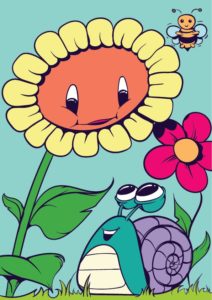 From an early stage children express an increased desire to draw, color and simply to put pen to paper in one from or another. Some think this fact is due to bright colors that have an immense impact to a young mind, others, to the desire of replicating actions grown-ups undertake. Whatever the reason, it has been proven scientifically that drawing and coloring plays a vital role in the early development of the cognitive and emotional aspects of children, increasing mobility, exciting creativity and imagination, teaching responsibility and empowering personality expression and free will.
From an early stage children express an increased desire to draw, color and simply to put pen to paper in one from or another. Some think this fact is due to bright colors that have an immense impact to a young mind, others, to the desire of replicating actions grown-ups undertake. Whatever the reason, it has been proven scientifically that drawing and coloring plays a vital role in the early development of the cognitive and emotional aspects of children, increasing mobility, exciting creativity and imagination, teaching responsibility and empowering personality expression and free will.
Scribbling as it is known represents the first depictions a child undertakes on a blank paper. The will 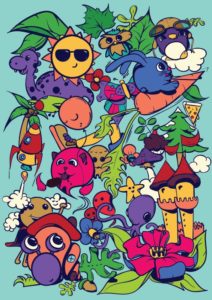 to represent the surrounding environment as it is understood and seen by the young mind lies in each and every one of us. Some express an early reflection of what is considered to be talent, a clever method of associating still objects with movement, an early understanding and perception of proportions and perspectives, of scale, size, light and shadow. Such talent and imagination requires practice under professional guidance, constant positive feedback and encouragement. It is the early years that will form the base for future development.
to represent the surrounding environment as it is understood and seen by the young mind lies in each and every one of us. Some express an early reflection of what is considered to be talent, a clever method of associating still objects with movement, an early understanding and perception of proportions and perspectives, of scale, size, light and shadow. Such talent and imagination requires practice under professional guidance, constant positive feedback and encouragement. It is the early years that will form the base for future development.
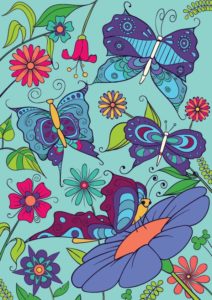 The scribbling incipient phase is followed by the grasping of shapes and their association, stage reflected in what is considered the primary raw form or interpretation and conceptualization. Even if the actual conceptualized drawing comes in much later after practice and learning, the unconscious form will reflect a future easiness of assimilating techniques and practices. Color comes in now in basic tones and evolves into different mixtures, hues, gradient, shadows and lights. Coloring books represent essential materials required to teach discipline as well as to stimulate creativity and imagination. Even though respecting the imposed limits will teach responsibility, never impose creativity to a young mind, never limit their imagination. So what if the sky is red and leaves are not green? Childhood is the perfect medium to experiment and imagine.
The scribbling incipient phase is followed by the grasping of shapes and their association, stage reflected in what is considered the primary raw form or interpretation and conceptualization. Even if the actual conceptualized drawing comes in much later after practice and learning, the unconscious form will reflect a future easiness of assimilating techniques and practices. Color comes in now in basic tones and evolves into different mixtures, hues, gradient, shadows and lights. Coloring books represent essential materials required to teach discipline as well as to stimulate creativity and imagination. Even though respecting the imposed limits will teach responsibility, never impose creativity to a young mind, never limit their imagination. So what if the sky is red and leaves are not green? Childhood is the perfect medium to experiment and imagine.
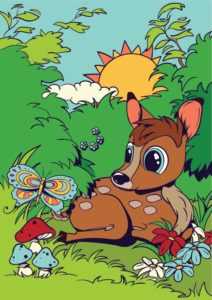 The human body as it is understood by the child comes into focus in family portraits and illustrations, firstly formed from basic line and shapes and later on gaining proportions and perspective. Wrist control has now improved, discipline is required and accepted and real-life depictions take the place of imaginative thinking. It is a rather sad stage but one that expresses a real, essential understanding of the surrounding world and medium. From here on, professional assistance might be required if a disposition for this field is shown but aid and encouragement from the parents is crucial. Keep boosting confidence, appreciate even the slightest creation, do not compare and contrast between siblings to avoid negative competitiveness and keep an open mind regarding personal taste and personality expression, every single child is unique in its own particular way.
The human body as it is understood by the child comes into focus in family portraits and illustrations, firstly formed from basic line and shapes and later on gaining proportions and perspective. Wrist control has now improved, discipline is required and accepted and real-life depictions take the place of imaginative thinking. It is a rather sad stage but one that expresses a real, essential understanding of the surrounding world and medium. From here on, professional assistance might be required if a disposition for this field is shown but aid and encouragement from the parents is crucial. Keep boosting confidence, appreciate even the slightest creation, do not compare and contrast between siblings to avoid negative competitiveness and keep an open mind regarding personal taste and personality expression, every single child is unique in its own particular way.
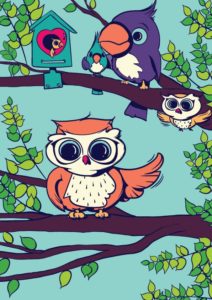 Make sure you provide the basic pen and white paper from the start and advance with the art materials as things progress and interest is expressed. Encourage the study of various techniques before the child desires to focus on one or another and associate drawing and coloring with music for increased productivity and better brain development.
Make sure you provide the basic pen and white paper from the start and advance with the art materials as things progress and interest is expressed. Encourage the study of various techniques before the child desires to focus on one or another and associate drawing and coloring with music for increased productivity and better brain development.
In the end we would like to invite you to immerse yourself into the colorful world of cartoons and to remember what it felt to be a child once again and enjoy the simple act of coloring.
Courtesy to Homesthetics Magazine


